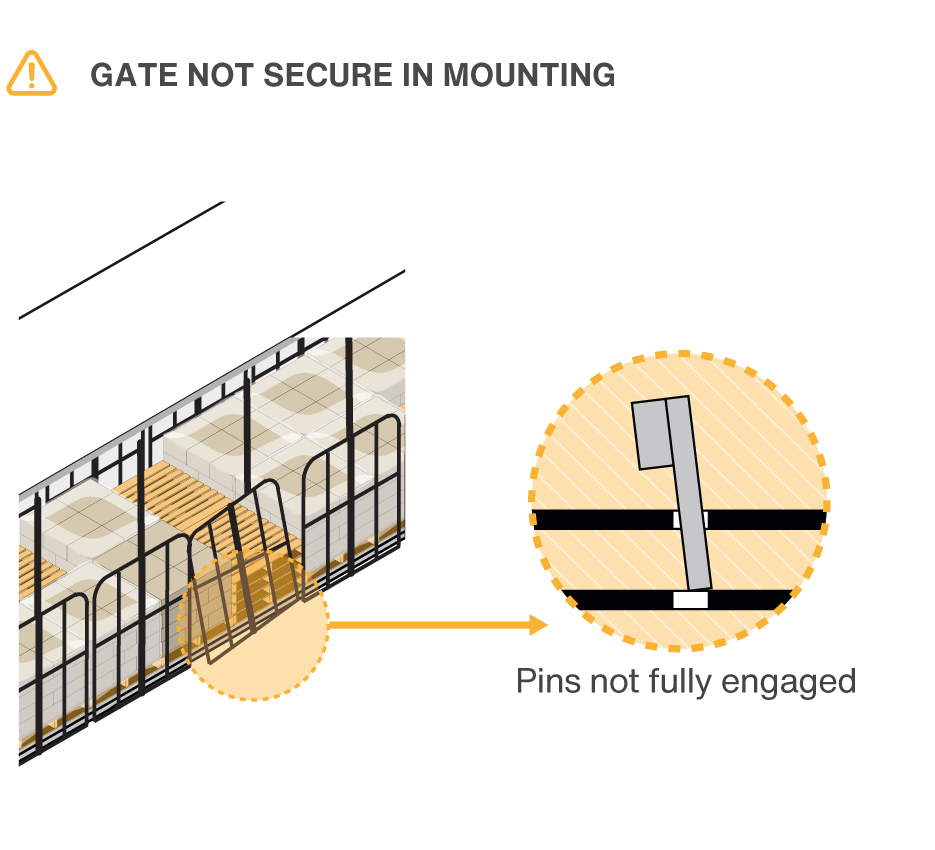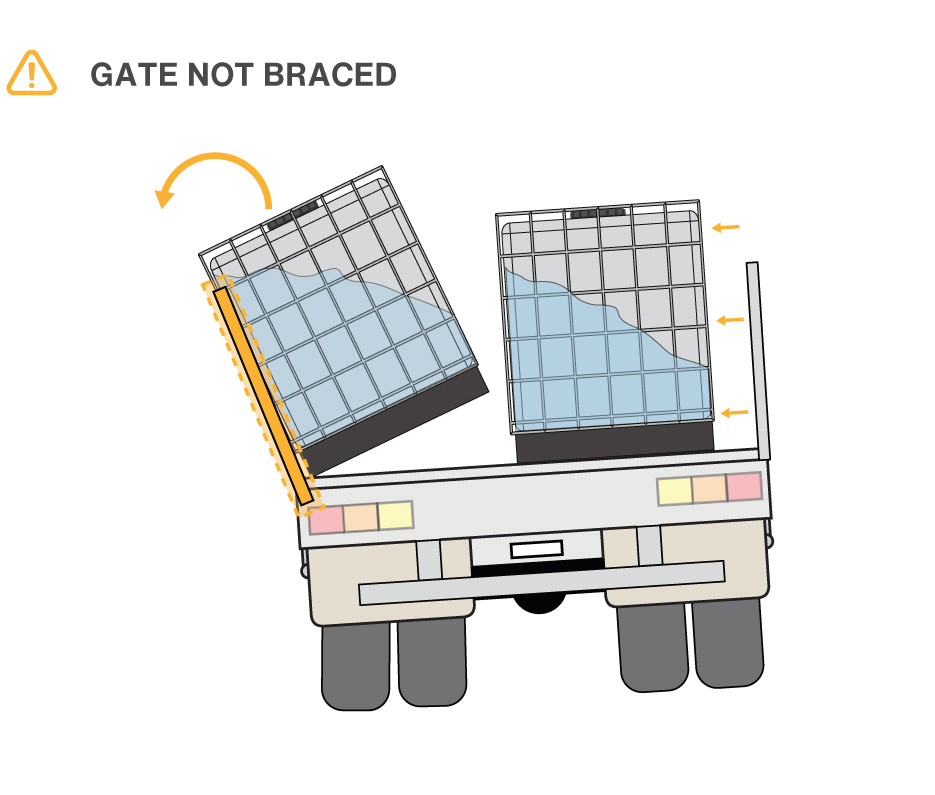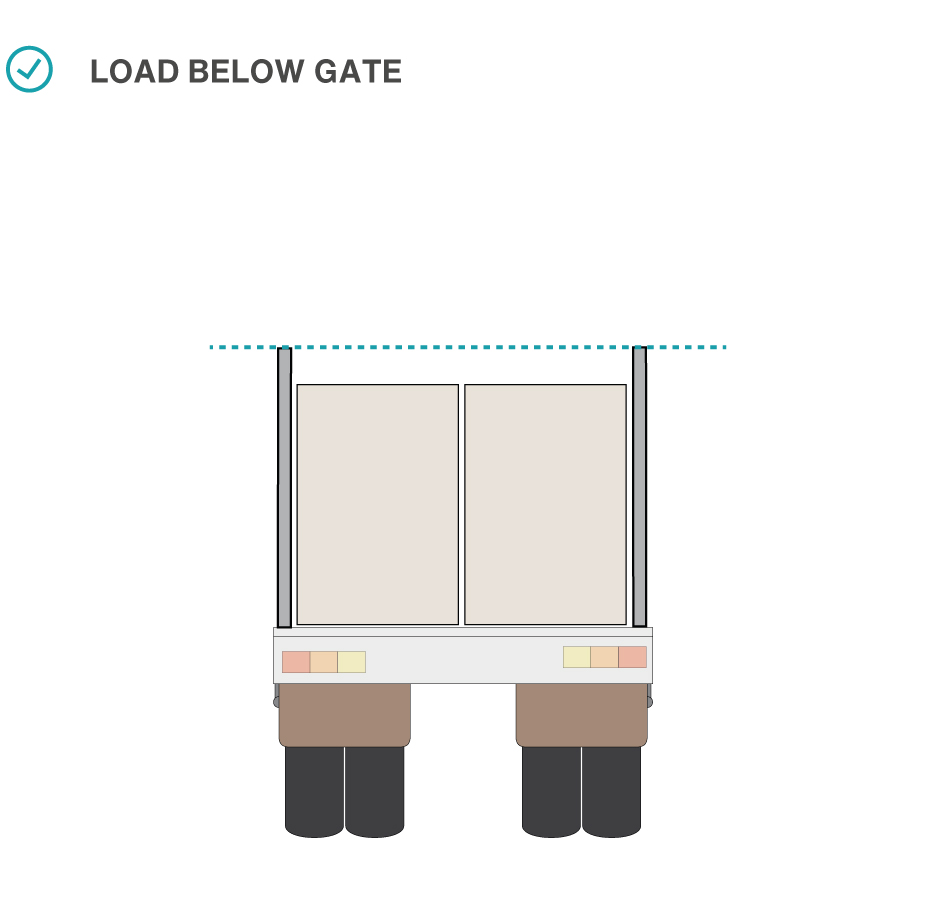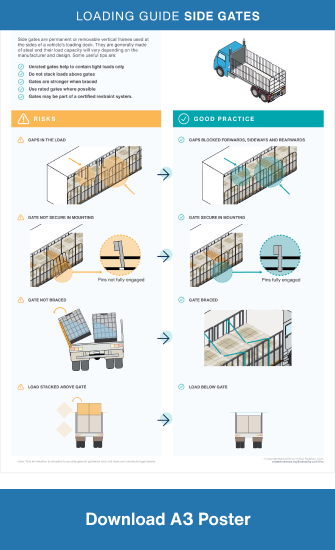Loading Guide - Side Gates
Loading Guide - Side Gates
National
Heavy
Vehicle
Regulator
This guide is part of a series of loading guides that provide tips and tricks to help you understand good load restraint. More detailed information on the principles covered by this guide and the use of rated and unrated gates can be found on page 143 of the Load Restraint Guide 2025.
What are gates?
Side gates are permanent or removable vertical frames used at the sides of a vehicle's loading deck to contain its load.
They are generally made of steel and their load capacity will vary depending on the manufacturer and design. This is why it is hard to give a generic load rating to unrated gates.
What are rated gates?
Rated gates have been designed and certified by an engineer to withstand the forces experienced with transporting loads.
Certification of rated side gates should specify details about the load that the gates can restrain, including size, shape, weight, and packaging.
Certification is usually provided by the manufacturer, however gates can also be certified by a suitably qualified engineer.
Are all gates rated?
No, many side gates are not rated.
Unrated gates have limited restraint capacity and should only be relied on if the load is relatively light weight, and the gates are braced.
For more detailed information on the use of unrated gates see page 143 of the Load Restraint Guide.
Using gates
If using gates as part of your load restraint system you should:
- Check that side gates are locked into place with locking pins or tied down so that they do not fall out.
- Check for any loose items that can pass through the gaps in the side gates.
- Check the load is not stacked above the height of the side gates.
- If using rated side gates, ensure the load does not exceed the manufacturer’s specifications.
- If using lashings to restrain side gates, check that they do not affect the tie-down angle applied to the load.
Tips
It is extremely important to follow the manufacturer’s instructions in relation to the use of any gate in a load restraint system.
Make sure there are no gaps in the load in the forward, backward or sideward directions. If there are gaps in the load, block them in all directions with empty pallets or stillages.
Risks

Good practice

Make sure gates are locked into both top and bottom holes and are not elongated or worn. Make sure gates provide adequate sideways restraint and all components are straight and undamaged.
Risks

Good practice

Unrated side gates have limited restraint capacity and should be braced. They should be supported at the top by diagonal cross lashings to the opposite tie rails.
Risks

Good practice

When using side gates, make sure the top of each side gate is well above the base of any item of the load. Loads placed near or above the top of the gates could become dislodged from the vehicle.
Risks

Good practice

Case study

A heavy vehicle equipped with unrated side gates was loaded with fencing wire.
As the driver turned the corner the fencing wire fell over bending the side gate.
If this load had fallen onto the road surface it could have caused serious injury or death to other motorists and pedestrians.
This type of load has a high centre of gravity and is likely to topple if not restrained appropriately.
Loads that may topple should be grouped together, braced, or laid down and any gaps between the load and the gates filled with suitable packing.

 Accessibility tools
Accessibility tools


